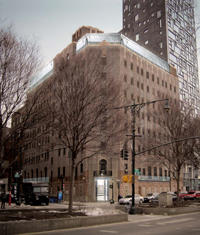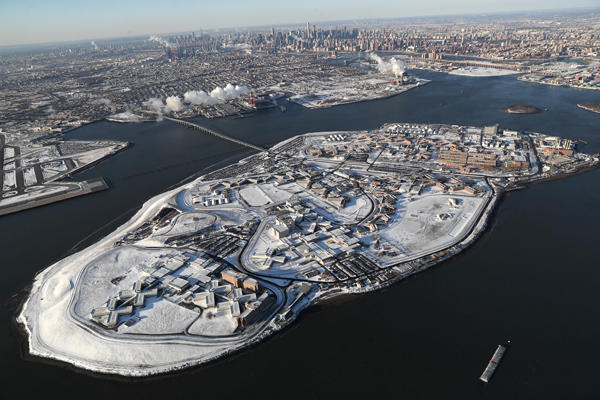Redeveloping former jails sounds like a grim undertaking. But it’s happening more and more across the nation. After decades of skyrocketing prison rates — spurred by more stringent sentencing guidelines — the inmate population finally began dropping under President Barack Obama.
Although the U.S. still has the largest prison population on the planet and could see the number of people locked up easily grow again under President Donald Trump, a number of bricks-and-mortar prisons are shuttering.
Here in New York, Mayor Bill de Blasio and the City Council have pledged to close the notorious jail known as Rikers Island and to replace it with new facilities.
But what happens to the old jails? Citywide, developers are rehabbing or demolishing them and creating new offices or affordable housing.
In West Chelsea and Staten Island, developers have opted for refurbishment. Meanwhile, in the Bronx, Hudson Companies and its partners are demolishing the former Spofford Juvenile Detention Center to make way for a mixed-used project. “The feedback we heard from neighbors and community leaders is that it’s something people want to remove from the neighborhood,” said Hudson principal Aaron Koffman. “They want it gone, in its entirety. There won’t be this cloud of what it was hanging over the project. I’ve only heard excitement. I haven’t heard a lot of like, ‘Oh, God, it’s got bad mojo.’”
Here’s a look at the intersection of prison and property.
43%

The spike in U.S. prison construction between 1990 and 2005. The building boom, fueled by President Bill Clinton’s big crime bill, added 544 prisons nationwide, bringing the total up to 1,821. That’s where the number stands today. During that 15-year period, an average of one prison was constructed every 10 days.
27
The number of consecutive years NYC crime has declined. Last year, there were 286 homicides compared to 2,245 in 1990. In addition, overall crime in the city is at its lowest levels since the 1950s — a big win for everyone, including real estate investors.
9

The number of jails on Rikers Island — one of which is slated to close this summer. Mayor de Blasio has agreed to shut down the entire jail complex by 2027 and plans to construct four new facilities throughout the city. In January, the city tapped architecture firm Perkins Eastman to conduct a $7.6 million study assessing new locations and designs.
$7M

The price tag Broadway Stages agreed to pay for Arthur Kill Correctional Facility on Staten Island in 2014 with plans to convert it into a movie studio. But the State Comptroller rejected the deal, arguing that the price was roughly $45 million below market value. Still, scenes from “Orange Is the New Black” and “Ocean’s Eight” have been shot there.
9,133
The number of New Yorkers incarcerated. In addition to Rikers, the city operates three other jails, two hospital wards and 16 court detention facilities. Nationwide, there are nearly 2.3 million people in prison, jail and other facilities, the most per capita of any country.
$200M

The value of the lease the nonprofit NoVo Foundation, which was founded by Warren Buffett’s son, signed with the state for a former women’s prison. The 100,000-square-foot facility will now house female-focused groups. The Chelsea building abuts 100 Eleventh Avenue, the Jean Nouvel-designed tower, where a unit is currently listed for $8.1 million.
$300M
The amount Hudson Companies and partners are paying to redevelop the site of a shuttered Hunts Point detention center. The city gave them the green light to build 740 units of affordable housing, 52,000 square feet of recreational space and 49,000 square feet of light industry, including a catering company and brewery.
70 sq. ft.

The approximate size of a cell at Rikers, where notorious slumlord Steve Croman is serving a year-long stint. That’s a major downgrade from his palatial 19,000-square-foot Upper East Side mansion.
